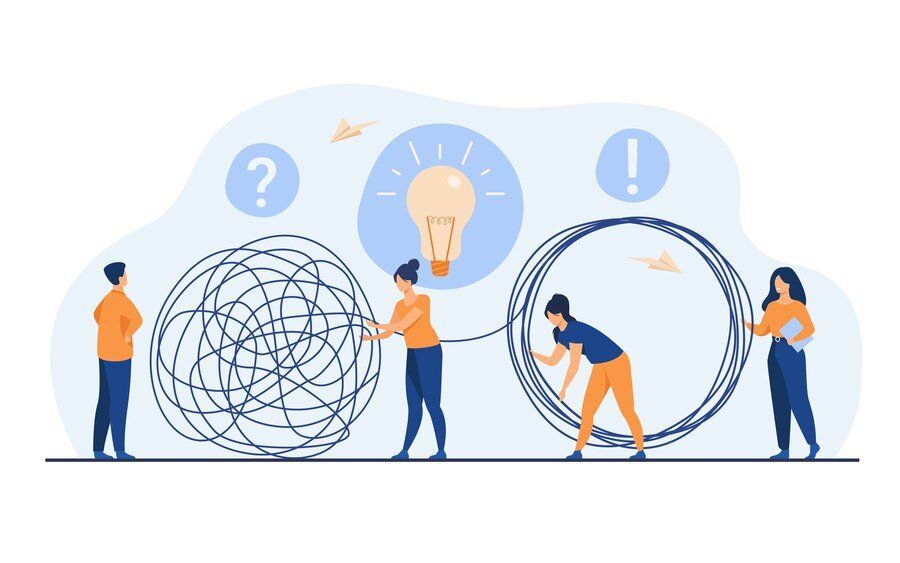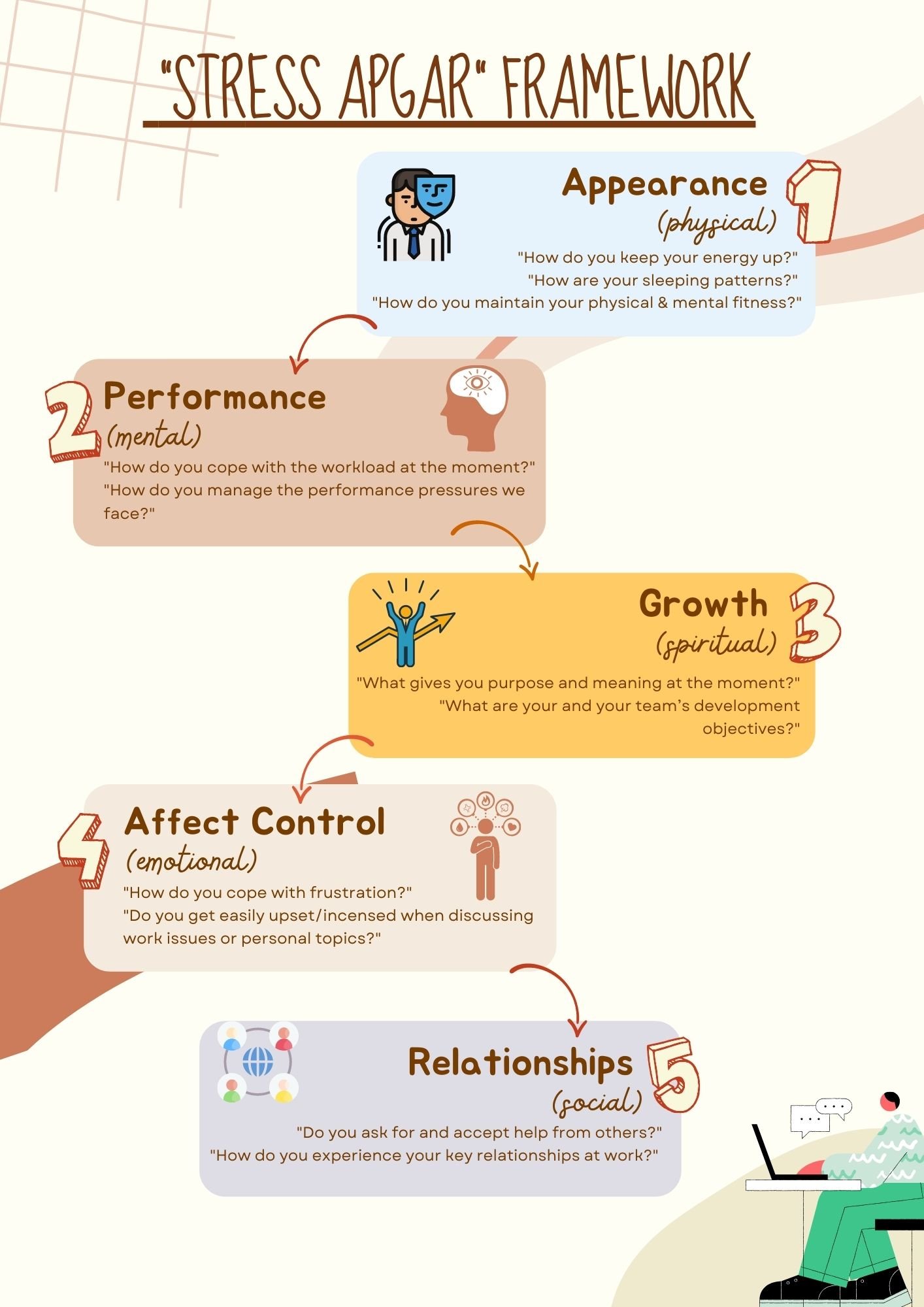How To Spot When An Employee Is Secretly Struggling

An “emotional triaging” technique can help managers identify early warning signs of COVID-19 burn-out and take appropriate actions.
The COVID-19 world is marked by a high degree of uncertainty and existential fear, a dearth of social interaction, the convergence of professional and personal space, a lack of physical activity and an obsessive focus on hygiene and social distancing. For professionals, it amounts to a toxic combination that elevates stress levels and increases the risk of burn-out. Virtually no one – and no organisation – is immune.
Now more than ever, every manager should become sensitive to the mental health of their teams, not to mention themselves.
But few managers have formal training in this arena, which means their ability to directly intervene in the most severe cases is limited. What managers need first and foremost is a set of tools to help identify when an employee is seriously struggling. They can then take appropriate steps to ensure the sufferer has access to the necessary resources, before the problem becomes so big that it’s overwhelming.
This sounds straightforward, but it’s actually a complex and delicate matter. Especially during the early stages of burn-out, people are reluctant to be emotionally open with their manager for fear of being judged a “stressed-out employee”. For a manager to approach the issue head-on with blunt questions may backfire. Therefore, we advocate for a three-step system that we call “emotional triaging”.
Read More: Effective Leadership Is Managerial
1. Check-in with the team
Several studies indicate that group emotions have a direct effect on group behaviour, with regards to cooperation and performance but evaluating them needs to be done according to good professional standards. Checking-in is an intentional practice for a team to start a meeting. When the team is aware of potential personal distractions, it’s easier to focus on the primary task or project itself.
Checking-in increases self-awareness and the cohesion of teams as team members become less judgmental. Be aware that certain team members might struggle more in sharing, such as introverts, outsiders or junior employees.
We suggest a pragmatic approach for emotional checking-in that can work even in the virtual space. Ask team members to self-evaluate on a scale of 1-10 (e.g. via a Zoom poll) in response to questions such as “What is your energy level? What is your stress level in the current working environment?” Adding one or two explorative questions can give further insights into the emotional well-being of the team. For example: “What are the three challenges you consider as the most important to address at the moment for you and the team?”
2. Individual deep dives
However, some employees might still feel intimidated. Drawing them out will require individual attention and sensitivity. Hence, we suggest including deep dives as part of regular conversations. The objective is to explore further for early signs of stress. Avoid directly asking “Are you stressed?” as this might trigger a denial or defensive behaviour. A better way to start is to be open about how stress is affecting you, establishing from the outset that the topic is not taboo. This shows vulnerability and triggers reciprocity in others.
From there, consider asking open questions such as “How do you manage your current workload, tons of e-mails and the virtual work? What do you consider as the main challenges in the current situation?” These general questions can start a short discussion in which you can explore potential stressors.
These virtual conversations are much better managed if both parties have audio and video enabled. That way, you can pick up on red flags in the employee’s body language.
You May Like This: When Words Get In Our Way- How to Hang On To Your Equanimity
In scanning for early warning signs, managers can use our “Stress APGAR” framework to evaluate stress levels.

Infographic by Leaderonomics: "Stress APGAR" Framework
- Appearance: Visibly evident sleep disturbance, dejected posture and bodily pain (PHYSICAL)
- Performance: Impairment of cognitive performance (due to time pressure, information overload and uncertainty) (MENTAL)
- Growth: Loss of a sense of purpose, direction and hope for a better future (SPIRITUAL)
- Affect control: Uncontrolled outbursts and irritability (EMOTIONAL)
- Relationships: Deterioration of relationships and social isolation (SOCIAL)
In contrast to the original APGAR (a well-known health scoring method from neonatal medicine), the Stress APGAR is not an assessment tool but rather a guide for managers to ask the right questions. For example, managers can consider asking:
Appearance – How do you keep your energy up? How are your sleeping patterns? How do you maintain your physical and mental fitness?
Performance – How do you cope with the workload at the moment? How do you manage the performance pressures we face?
Growth – What gives you purpose and meaning at the moment? What are your and your team’s development objectives?
Affect control – How do you cope with frustration? Do you get easily upset/incensed when discussing work issues or personal topics?
Relationships – How do you experience your key relationships at work? Do you ask for and accept help from others?
Our Stress APGAR framework can be incorporated into your usual one-to-one conversations, especially with colleagues you are already concerned about.
3. Show compassion and know your limits
In the last step of emotional triaging, you need to consider appropriate actions.
Some team members already have a strong coping mechanism in place. Take care not to favour them above others who are having a tougher time. Instead, use them wisely as a possible source of help for their stressed-out peers, either through coaching or relieving colleagues of tasks that might be adding stress.
Stress sufferers can be separated into two categories based on the Stress APGAR framework. People who satisfy at least two of the five criteria should receive more of your time and attention. You should especially be concerned if you recognise some of unhelpful coping mechanisms such as ignoring individual issues (denial), inability to ask for and accept help (heroism) and the tendency to protect others at their own expense (helper syndrome). You must remain in closer contact with these workers and strongly encourage them to access resources for help, such as mental health professionals.
Employees who meet only one or none of the Stress APGAR conditions may be regarded as minor cases, whose stress management can perhaps be sufficiently improved by the compassion and support you can provide. They are still at risk, however, especially if they are either unaware or unable to seek support (e.g. overloaded agenda and professional/personal life conflicts).
Read More: Show Them Their Worth: The Benefits of Serving Up Gratitude
Beyond the crisis
COVID-19 is a literal “stress test” for individuals, teams and organisations everywhere. The current crisis challenges managers to rapidly and radically increase their mental health awareness, so that they can prevent their teams from being defeated by stress. Practices such as the above can help companies and managers remain at that high level of awareness, if they are continued after the pandemic passes.
Dear employers, do you want to know if your employees are overwhelmed or overworked? You can prevent burn-outs by using technology like Happily (or Budaya for those from Indonesia). This app is an amazing engagement app built for organisations to drive engagement amongst employees. It has amazing analytics and also provides activities for employees to be fully immersed in the organisation's culture and values.
To find out more, click here or email info@leaderonomics.com

INSEAD: This article is republished courtesy of INSEAD Knowledge. Copyright INSEAD 2022.
Business





